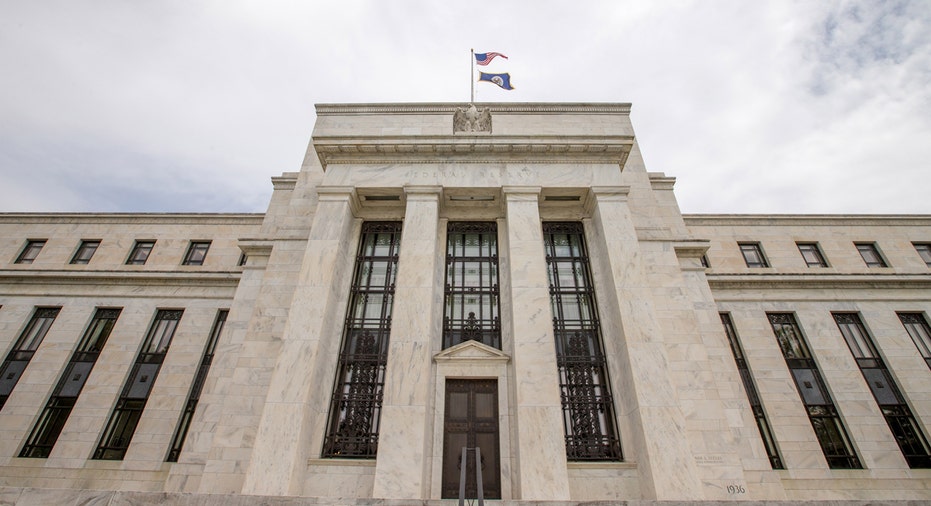Rising Interest Rates Don't Have to Banish Bond ETFs

Rising interest rates will weigh on fixed-income portfolios, but investors can diminish the risks by moving down the yield curve to low-duration bond exchange traded funds.
With the an interest rate hike back on the table, fixed-income investors may want to think about ways to limit the negative impact of rising rates, such as moving to low-duration bonds.
In a rising rate environment, the price of older bonds with lower rates will fall since these older debt securities appear less attractive and traders would demand a discount on the older lower-yielding debt. On the other hand, new bonds are issued at the newer and higher rates, so investors would be less inclined to hold older debt securities with less attractive yields. Consequently, the less appealing older bonds will see prices fall in response to the diminish demand.
Bond funds hold a collection of debt with varying maturities, buying and selling debt securities to maintain their short-intermediate- or long-term strategy.
When it comes to bond ETFs, investors should look at the duration, or a bond fund’s measure of sensitivity to gauge their investment's exposure to changes in interest rates - a higher duration means a higher sensitivity to shifts in rates.
If interest rate risk is a major investment concern, investors may sleep better by moving down the yield curve to shorter-term bond funds.
For instance, the iShares 20+ Year Treasury Bond ETF (NYSE:TLT) has been a popular Treasury bond play for yield generation over the past few years after the Federal Reserve implemented near-zero interest rates and a robust bond purchasing program. However, TLT comes with a 17.72 year duration - a 1% increase in interest rates would translate to about a 17.72% decline in the fund's price. Alternatively, fixed-income investors should consider short-term, high investment-grade debt securities in a rising rate environment to hedge risks associated with higher rates and any potential volatility in markets when rates do rise.
Among short-term Treasury bond ETF options, investors can look to the iShares 1-3 Year Treasury Bond ETF (NYSE:SHY), which has a 1.84 year duration and a 0.64% 30-day SEC yield, Schwab Short-Term U.S. Treasury ETF (NYSEA:SCHO), which has a 1.9 year duration and a 0.7% 30-day SEC yield, and Vanguard Short-Term Government Bond ETF (NYSE:VGSH), which has a 1.9 year duration and a 0.7% 30-day SEC yield. While these conservative short-term bond plays may seem boring and offer lower yield opportunities, the funds' low durations help investors weather rising rates and hedge against any volatile turns in the broader market, as opposed to long-duration bond ETFs like TLT, which can cause a significant loss in principal.
Additionally, there are a number of other short-term, investment-grade bond ETF options available available. For municipal debt exposure, the SPDR Nuveen Barclays Short Term Municipal Bond ETF (NYSE:SHM) has a 2.81 year duration and a 0.68% 30-day SEC yield. The VanEck Vectors-Short Municipal ETF (NYSE:SMB) has a 2.76 year duration and a 0.87% 30-day SEC yield. The iShares Short Term National AMT-Free Muni Bond ETF (NYSE:SUB) has a 1.92 year duration and a 0.54% 30-day SEC yield. For a little higher yield generation, investors can turn to short-term, investment-grade corporate debt options. The iShares 1-3 Year Credit Bond ETF (NYSEA:CSJ) has a 1.97 year duration and a 1.32% 30-day SEC yield, Vanguard Short-Term Corporate Bond Index (NYSE:VCSH) has a 2.8 year duration and a 1.87% 30-day SEC yield, and SPDR Barclays Short Term Corporate Bond ETF (NYSE:SCPB) has a 1.87 year duration and a 1.57% 30-day SEC yield.
By moving down the yield curve with shorter duration bond funds, fixed-income investors can reduce any negative response to higher interest rates.
For more ETF news, strategy and commentary, visit our partners at ETFtrends.com.



















